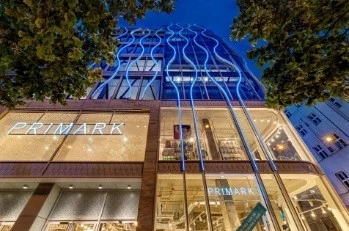Turning loyalty into an advantage at Boots
The Boots Advantage Card, celebrating its 25th anniversary this year, is an example of the enduring popularity of loyalty cards – and the benefits of leveraging customer data
Add bookmark
In the past 25 years, the Boots Advantage Card has become one of the UK’s most popular loyalty schemes, with 15 million active users today, 52,000 of whom signed up when the card was launched in 1997.
The card turned out to be a trendsetter – Hollie McLellan (pictured below), director of customer marketing at Boots, says it was one of the first schemes of its type on the market at the time: “Fast forward to now and most larger retailers offer a loyalty programme.”
She adds: “It has become an expectation from the customer… it is about how we use the loyalty program to understand our customers, so we can continue to meet and surpass their expectation.”
This reflects the findings of Transforming Customer Loyalty Through The Power Of Data, a 2022 white paper by Visa Consulting and Analytics. This report identified key trends, such as customer preferences for “a more personalized and differentiated loyalty proposition” and using digitalization to attract more customers, while retaining loyalty in an increasingly crowded market.
Increased digitalization has improved the ability to collect, interpret and effectively use customer data. McLellan points out that over the years, the way the brand collects data has evolved.
“The power of our data has always been knowing what customers buy, and this was the same when we had a physical card as when we had a digital one,” McClellan explains. “The only difference has been being able to improve the quality of the identifiable data [such as] email addresses.”
To discount or reward
Introducing the Boots mobile app to Advantage Card customers helps Boots understand browsing behavior, which McClellan says is used to personalize shopping experiences. For example, this data reveals that December is the most popular month for redeeming points and 21 December is the most popular day, as customers use points to pay for Christmas shopping.
It is a far cry from the early days of the Advantage Card. McClellan says that when it was launched, the retailer “hoped that the scheme would give its customers an opportunity to treat themselves simply by shopping.”
“The original objective was to reward customers with points when they spend money in store, rather than a discount card,” says McClellan. “The self-reward and self-treat positioning of the card set it apart from other loyalty cards at the time, which were seen as a way of saving money.”
As well as pioneering the strategy of rewards points rather than discounts, Boots was an early adopter of smart card technology to enhance data management, according to McClellan. She says this technology meant the data was “readable in all stores [because] the information was held on the card, rather than a central computer”, and it could be processed faster at the tills.
The Advantage Card has always offered customers four points for every £1 spent at Boots, with value for money still a major attraction: “It is firmly based on offering great value to our most loyal customers and it plays a huge role in our customer engagement strategy, [helping] us to better understand our customers and their shopping habits.”
Customer-centric
Leveraging customer feedback is vital for personalization, according to CX Network’s annual flagship report, The Big Book of Customer Insight and Analytics. McClellan says that Boots is “constantly receiving positive feedback from our customers about how much they love the Advantage Card, whether that is receiving personalized offers, or the fact they can save up their points to spend when they like and on whatever they want at Boots.”
In the current economic environment, with consumers feeling the pressure of rising prices, McClellan says the Advantage Card scheme is an effective way to safeguard and promote loyalty, while meeting more challenging customer demands.
“As our customers’ expectations evolve, so do our loyalty programmes and we recognize that customers are facing bigger pressures on their spending,” she says. “We have expanded the Advantage Card scheme to be able to offer even more to our customers.”
One of the new services for cardholders is the Price Advantage scheme, launched in January in stores and online. This scheme allows cardholders to access lower prices on a wide range of products, with McClellan saying this has already saved shoppers more than £12 million.
Smart data gathering has improved Boots’ understanding of its customers, so it can tailor services accordingly: “We know that customers are demanding more value and more variety in the offers, and we know that customers' shopping habits are constantly changing, including wanting instant access to more things digitally at the touch of their fingertips.”
The mobile app has been available since 2019, with customers receiving personalized offers through this interface, with McClellan saying the offers can be redeemed in different ways, either online and in store.
McClellan did not specify whether Boots has plans to add a premium, subscription-based tier to Advantage Card membership, as UK supermarkets Tesco and Morrisons have done in recent months. Instead, she says that there are “a number of exciting plans lined up” for the card over the coming months, such as expanding the Price Advantage scheme to more than 1,000 products each month.

 when we had a physical card as when we had a digital one,” McClellan explains. “The only difference has been being able to improve the quality of the identifiable data [such as] email addresses.”
when we had a physical card as when we had a digital one,” McClellan explains. “The only difference has been being able to improve the quality of the identifiable data [such as] email addresses.”


















